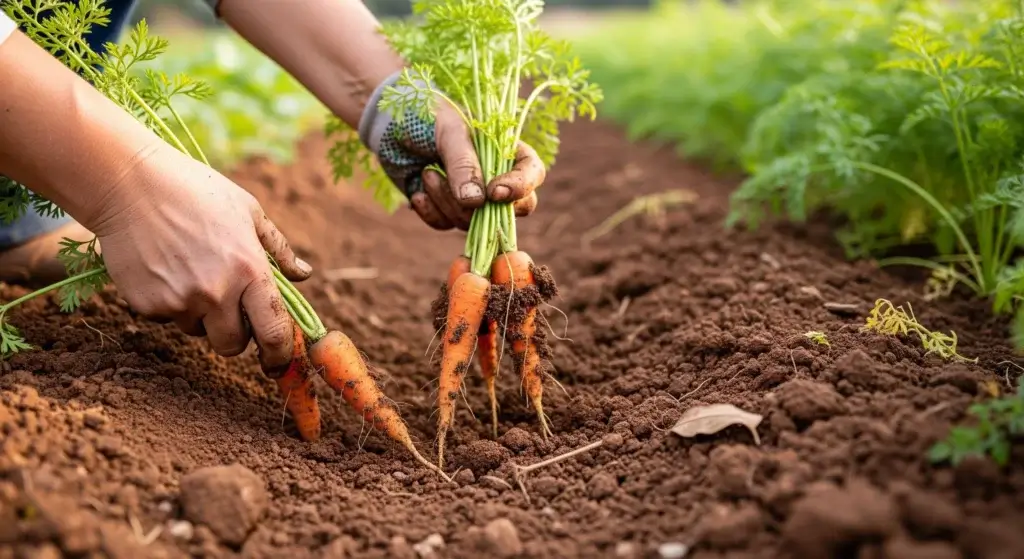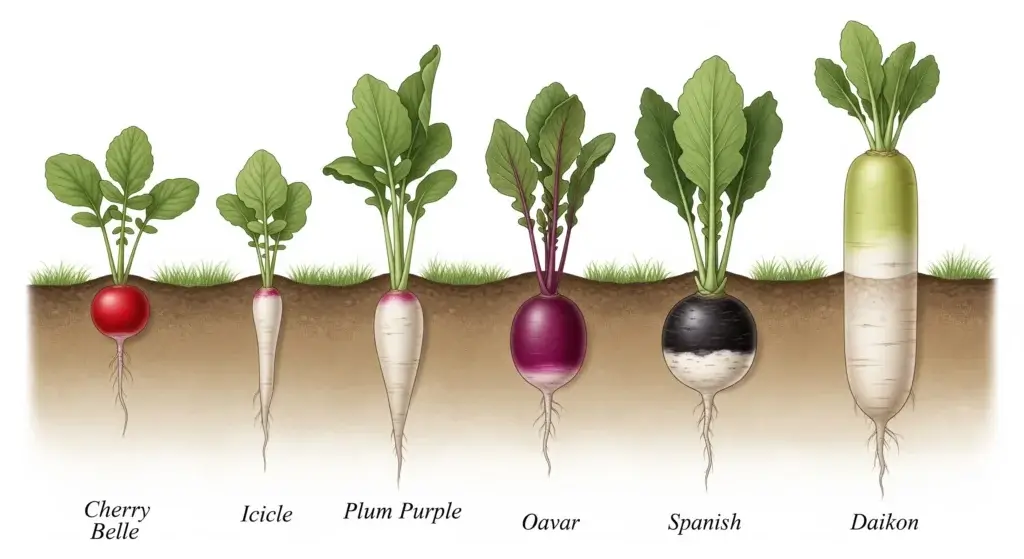
Lettuce is the crunchy hero of salads and smoothies, but it’s picky about its climate.
It loves cool weather and struggles with heat and humidity.
If your lettuce is turning bitter or wilting, your climate might be the villain.
In this guide, we’ll talk about:
- Lettuce’s ideal growing conditions
- Climates that make lettuce act up
- Tips for growing lettuce in hot weather
- When it’s time to switch to another crop
Let’s dig in and find out how to keep your lettuce happy!
Why Lettuce Is So Sensitive to Climate?
Lettuce may look like a salad superhero, but in the garden, it’s more of a delicate diva.
It thrives in cool temps between 10°C–20°C (50°F–68°F) and doesn’t handle heat, drought, or erratic watering well.
Common issues lettuce faces in hot or humid climates include:
- Bolting: When it gets too hot, lettuce bolts (grows a flowering stalk), and turns bitter—no one wants that!
- Leaf Scorch: Too much sun? Lettuce leaves get crispy and burnt, like an overcooked steak.
- Slow Germination: If the soil’s too warm (over 27°C or 80°F), lettuce seeds take their sweet time, or don’t sprout at all.
- Pest Problems: High humidity or rain brings out the pests—aphids, slugs, and fungi—like a villain squad in a bad movie.
So, while lettuce might be a crunchable delight in your bowl, it’s a picky plant when it comes to weather!

Which Climates Make Growing Lettuce Difficult?
Lettuce is a bit of a diva when it comes to climate—while it can technically grow in most USDA zones (2–11), some places just aren’t a good fit for its picky nature.
Tropical climates (hot & humid)
Examples: South India, Florida, Southeast Asia
Lettuce bolts fast (aka flowers and turns bitter), gets hit with fungal leaf spots, and struggles to grow strong because of high nighttime temps.
Basically, it’s too hot for the cool-season lettuce vibe.
Desert climates (hot & dry)
Examples: Arizona, Rajasthan, Middle Eastern regions
Lettuce gets thirsty!
High water needs and constant sun can lead to leaf burn and bolting too soon.
It’s like trying to grow ice cubes in a desert!
Subtropical climates with mild winters & hot summers
Examples: Parts of Texas, Queensland
Lettuce has a short growing season here, so timing is everything.
You’ve got to be precise or risk a bitter crop or missed harvest window.
It’s like that one shot in a game where you either make it or totally miss.
Where Lettuce Grows Best?
Lettuce thrives in climates that play to its cool-season strengths—think temperate zones and coastal areas.
Here’s where it’s happiest:
Temperate zones with cool springs and falls
Examples: Pacific Northwest, parts of Europe
Lettuce loves cool weather, so mild springs and falls are like a 5-star spa for your leafy greens.
These regions let lettuce grow long and strong without the stress of scorching heat.
Coastal regions with mild summers
Examples: California, Mediterranean coasts
Coastal air brings moderate temperatures and steady moisture, creating lettuce’s ideal “chill zone.”
Think of it like a permanent vacation for your lettuce—perfect growing conditions without the humidity overload.
Areas with consistent moisture and good airflow
Examples: Pacific coast, parts of New Zealand
Lettuce doesn’t like extremes, so consistent moisture and good airflow keep it happy and healthy.
No high humidity or sudden dry spells here—just steady growth like a well-planned Netflix series release.

7 Smart Strategies for Growing Lettuce in Difficult Climates
If you’re determined to keep your lettuce game strong—even in challenging climates—you’re in luck!
There are plenty of ways to outsmart Mother Nature and get those crispy greens to grow.
Here’s how you can conquer the heatwave and keep your lettuce cool:
1. Go for heat-tolerant varieties
Not all lettuces are created equal!
Some are built to handle the heat without losing their cool (or their crunch).
- ‘Jericho’ (Romaine)
- ‘Parris Island Cos’ (Romaine)
- ‘Nevada’ (Batavia)
- ‘Summertime’ (Butterhead)
2. Plant in partial shade
Let’s face it, lettuce isn’t a fan of direct sunlight in the summer.
Give your greens a break by planting them somewhere that gets a bit of afternoon shade.
It’s like setting up a beach umbrella for your lettuce.
3. Use mulch to keep roots cool
Think of mulch as your lettuce’s personal air conditioner.
A thick layer of straw, compost, or leaves helps keep the soil cool, conserves moisture, and protects roots from that searing summer heat.
It’s like the lettuce version of a refreshing cold drink on a hot day.
4. Install shade cloth
Shade cloth is your best friend during the peak summer months.
Cover your lettuce beds with 30–50% shade cloth to reduce direct sunlight and prevent bolting.
It’s like giving your lettuce a stylish sunhat.
5. Try container gardening
Not all lettuces want to be stuck in one spot.
Using containers lets you move your lettuce around to cooler or shadier spots.
It’s like taking your lettuce on vacation whenever it gets too hot outside.
6. Use drip irrigation or water early
Lettuce likes consistent moisture but doesn’t want to be drenched.
Drip irrigation is the perfect solution—it delivers water directly to the roots without making your lettuce soggy.
If you’re doing it manually, just make sure to water early in the morning, before the heat sets in. Early bird gets the lettuce!
7. Grow indoors or hydroponically
If all else fails, bring the lettuce indoors.
Hydroponic systems or indoor grow lights let you control the climate, giving you perfect conditions for leafy greens all year round.
It’s like being a lettuce whisperer.

When It Makes Sense to Stop Growing Lettuce (Temporarily)
When should you give lettuce a break?
Sometimes, it just doesn’t make sense to keep pushing it, especially if it’s clearly not vibing with your climate.
Time to hit pause on lettuce
- Your lettuce bolts or dies every season, no matter how many tricks you try.
- You’re wasting water trying to keep it alive in a scorching zone.
- You’d rather grow crops that love your climate (and save water).
Alternative crops to try
- Malabar spinach (perfect for tropical heat)
- Swiss chard (loves a little extra warmth)
- New Zealand spinach (heat-tolerant and hearty)
- Kale (survives summer and is totally cool with it)
Final Thoughts: Quit or Adapt?
So, should you quit on lettuce in certain climates? Not necessarily!
Lettuce might be a diva, but you can still make it work.
With the right timing, heat-resistant varieties, and a little shade, you can keep your greens growing.
And if it still doesn’t work out? No biggie—plenty of other tasty greens are ready to step in and take over.
Keep growing, and let the garden magic happen!



